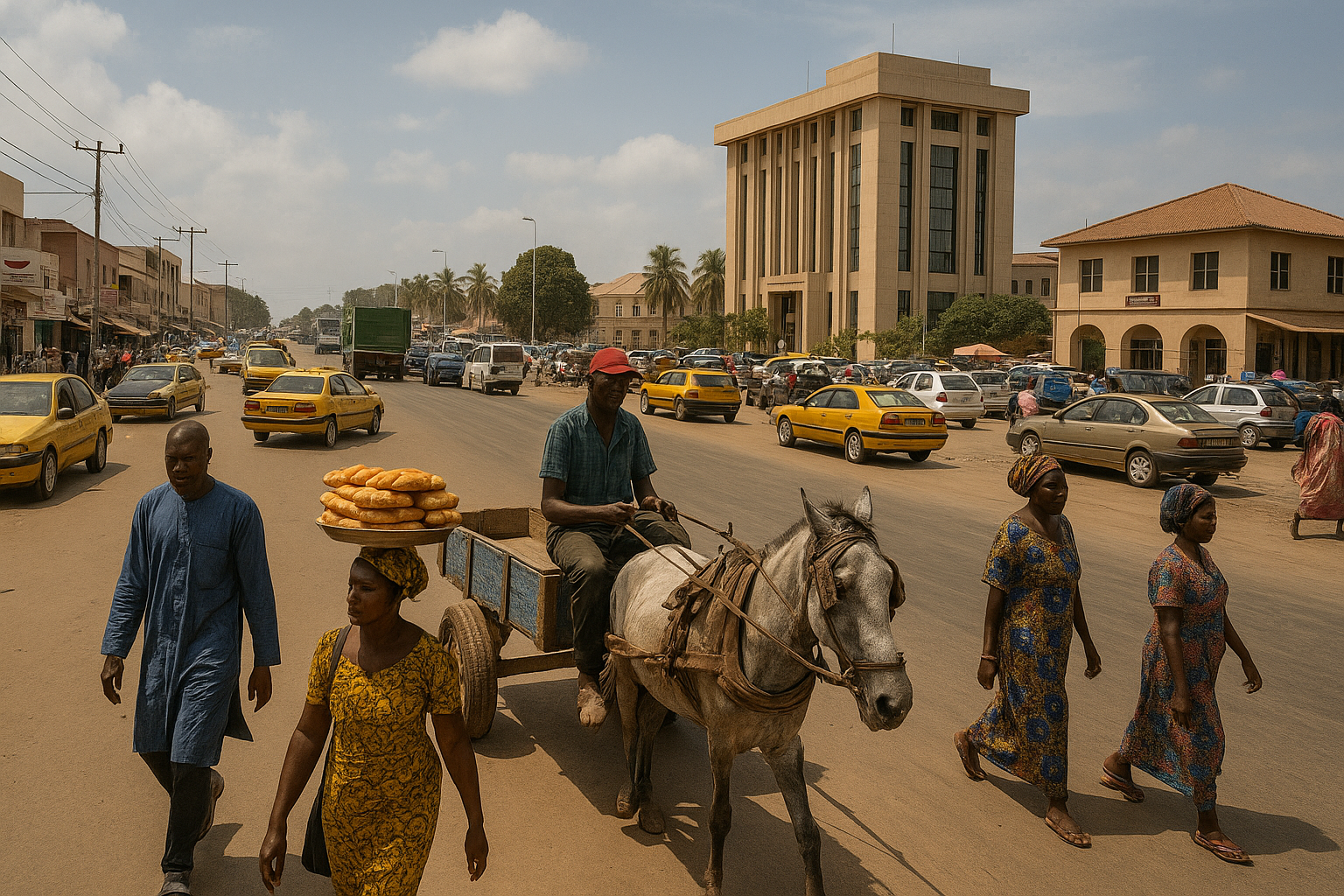The Gambia’s Economy Rebounds, Yet Rising Debt Casts a Long Shadow on Progress
The World Bank’s Gambia Economic Update (Spring 2025) hails the country’s strong 5.7% growth in 2024, driven by agriculture, services, remittances, and tourism, but warns that soaring public debt has become a crippling burden. It concludes that without bold reforms in revenue, spending, and debt management, this “Achilles heel” could derail The Gambia’s fragile economic progress.

The World Bank’s Economic Policy Global Department, working alongside the Gambia Bureau of Statistics and supported by international research teams, has released its Spring 2025 Gambia Economic Update under the title “Public Debt: An Achilles Heel?”. The report captures a country experiencing a remarkable rebound in growth while simultaneously grappling with an unsustainable debt burden that threatens to undo its progress. In 2024, The Gambia’s economy grew by 5.7 percent, up from 4.8 percent the previous year, with per capita growth climbing to 3.4 percent. Agriculture and services were the twin engines of this recovery, supported by fertilizer subsidies, improved seed distribution, and a near-full revival of the tourism industry. Demand was equally robust, powered by remittance-driven consumption and government spending related to preparations for the Organization of Islamic Cooperation summit. For the first time in years, The Gambia outpaced both Sub-Saharan Africa and ECOWAS averages, a reversal of its long-standing underperformance.
Inflation Slows as Monetary Tightening Bites
The macroeconomic backdrop improved further as inflation began to retreat. Falling food prices, combined with the Central Bank of The Gambia’s firm monetary stance, helped tame inflationary pressures that had previously eroded household purchasing power. The tightening cycle came at a cost, credit grew more expensive, and investment decisions were delayed, but it succeeded in stabilizing the dalasi, boosting investor confidence, and strengthening financial sector resilience. The banking system remains dominated by government securities, yet it is described as sound and adequately capitalized. In a region often battered by volatility, these gains position The Gambia as a small but notable example of policy discipline producing results.
Fiscal Deficit Narrows but Debt Dominates the Budget
Public finances also showed cautious improvement. The fiscal deficit shrank in 2024, thanks to declining domestic borrowing costs and better budget discipline. But these positives are overshadowed by the sheer weight of debt servicing. Interest payments, especially on domestic borrowing, consume the largest share of locally financed spending, squeezing out allocations for health, education, and infrastructure. The update notes that while poverty indicators have inched downward, the rate of improvement is too slow. Structural obstacles, including climate shocks, a stubborn jobs gap, and an economy still dependent on remittances, continue to hold back progress for the poorest Gambians.
The Debt Trap: Gains of 2007 Undone
The centerpiece of the report is its stark warning on debt. Having received major relief under the Heavily Indebted Poor Countries initiative in 2007, The Gambia has since watched its debt stock swell again to unsustainable levels. Most of it is external, owed to powerful multilateral creditors such as the Islamic Development Bank, IMF, IDA, and BADEA, as well as bilateral partners including Saudi Arabia, Kuwait, and India. On the domestic side, commercial banks remain the primary financiers. Charts and tables in the report drive home the point: debt service obligations are swallowing scarce resources and pushing the country into a cycle of borrowing to pay off past loans. Econometric modeling shows a clear non-linear relationship between debt and growth. At moderate levels, borrowing can finance investment and stimulate expansion. But The Gambia has moved far beyond the optimal threshold, with debt now acting as a brake on economic performance. Crowded-out investment, higher borrowing costs, and exchange rate stress are the most visible consequences.
Reform or Regression: The Choices Ahead
The looming expiration of external debt service deferrals makes this picture even more precarious. Forecasting models suggest that a full resumption of repayments would sharply erode fiscal space and weigh down growth. Conversely, if relief measures are extended or new financing secured, the outlook is less dire but still fragile. The report lays out a policy menu that demands political courage. Strengthening domestic revenue mobilization through improved tax collection and compliance is central. Public spending must be made more efficient, prioritizing essentials and cutting non-productive outlays. The development of local capital markets is encouraged, reducing reliance on foreign loans, while remittances and foreign direct investment should be redirected into productive ventures rather than short-term consumption. Above all, the authors urge embedding debt sustainability assessments in all future borrowing decisions.
The narrative that emerges is one of paradox. The Gambia is celebrating growth, restored stability, and modest poverty reduction, yet it remains shackled by debt dynamics that could undermine these gains at any moment. The metaphor chosen by the report, public debt as an Achilles heel, resonates deeply. Just as the legendary warrior was vulnerable at his heel, The Gambia’s economic body is exposed at its weakest point: the unsustainable burden of debt. The challenge for policymakers is clear. Without reforms, the progress of today risks becoming the disappointment of tomorrow. But with discipline, foresight, and stronger institutions, the country has a chance to turn its rebound into a sustainable trajectory, transforming debt from an anchor into a foundation for inclusive growth.
- FIRST PUBLISHED IN:
- Devdiscourse










